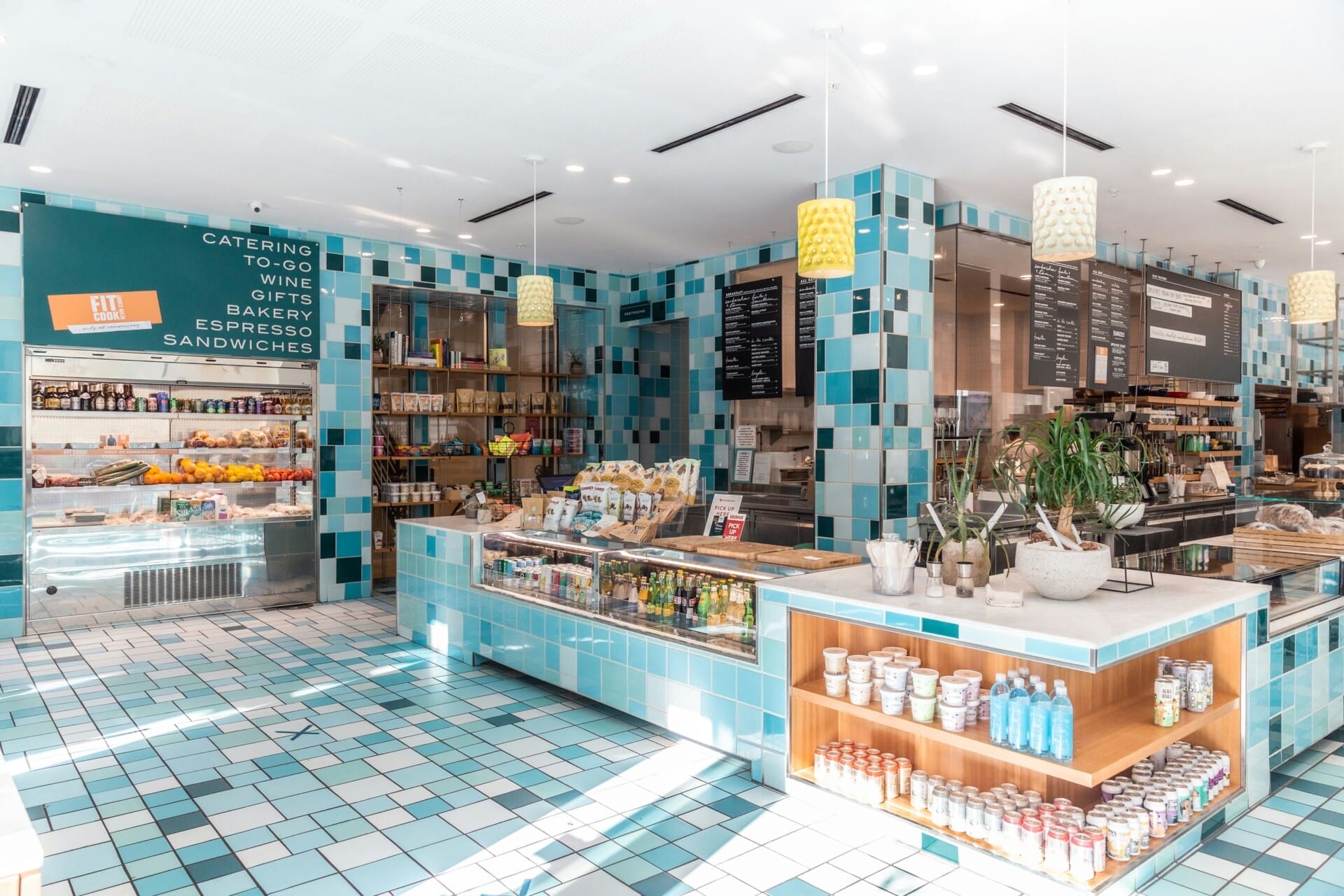Hey there, fellow Malaysians! Have you ever wondered how our industrial construction scene is evolving to keep pace with the fast-changing world? Well, you’re in for a treat! As we step into exciting times, the construction industry in Malaysia is not just building structures; it’s building the future. From cutting-edge technology to sustainable practices, there’s a wave of innovation rolling through our construction sites that you might not even be aware of. In this article, we’re diving into five eye-opening trends that are transforming the landscape of industrial construction here in Malaysia. So, grab a cup of kopi, sit back, and let’s explore what’s shaping our built environment in ways that are sure to blow your mind!
Embracing Sustainable Practices in Malaysian Industrial Construction
As the industrial construction landscape in Malaysia evolves, the shift towards eco-friendly practices is becoming more prominent. Companies are now prioritizing sustainable building materials, aiming to reduce their carbon footprint. This includes everything from recycled steel to eco-friendly concrete mixtures that minimize environmental impact without compromising on quality. Such materials not only enhance energy efficiency but also promote a circular economy within the construction sector.
Moreover, the integration of green technologies is a game-changer. Contractors are increasingly leveraging advanced solar panel systems, wind turbines, and rainwater harvesting techniques to power their construction sites. These technologies are not just about compliance with regulations; they are about maximizing efficiency and reducing operational costs in the long run. By harnessing renewable energy sources, the industrial construction sector is paving the way for a more sustainable future.
In addition, many companies are adopting smart building concepts that utilize IoT (Internet of Things) to monitor resources in real-time. This can lead to significant savings and more efficient resource management. For example, sensors can track energy consumption, ensuring that facilities only use what they need. Such innovations not only benefit the environment but also enhance overall productivity and profitability, proving that sustainability and economic viability can go hand in hand.

The Rise of Smart Technologies and Automation in Construction
The construction industry in Malaysia is witnessing a transformative shift with the integration of smart technologies and automation. This evolution is not just about improving productivity; it’s fundamentally changing how projects are planned, executed, and managed. From the use of drones for surveying to the deployment of Building Information Modeling (BIM), the breadth of technological adoption is creating more efficient workflows and reducing overall project times.
Automation plays a critical role in enhancing safety and reducing human error on construction sites. Utilizing robotics for repetitive tasks, such as bricklaying or material handling, not only speeds up the completion rates but also mitigates risks associated with manual labor in hazardous environments. A few noteworthy technologies gaining traction include:
- Exoskeletons: Wearable robotic suits that assist workers in lifting heavy materials.
- Drones: For real-time aerial surveys and monitoring project progress.
- 3D Printing: Enabling rapid prototyping and even entire structures being built layer by layer.
Furthermore, smart technologies are enhancing project management through tools that provide real-time data analytics, allowing for better decision-making. Many firms are adopting cloud-based platforms for seamless collaboration among teams, regardless of location. The table below outlines some key benefits of integrating smart technologies into construction projects:
| Benefits | Description |
|---|---|
| Increased Efficiency | Streamlined processes with minimal manual intervention. |
| Cost Savings | Reduction of waste and optimal resource allocation. |
| Enhanced Safety | Reduced chances of accidents through automation. |
| Data-Driven Decisions | Utilization of data analytics to improve planning and execution. |

Innovative Materials Shaping the Future of Industrial Structures
As we plunge into the future of industrial construction, innovative materials are taking center stage, transforming not just how we build but what we build with. Lightweight composites are leading the charge, combining incredible strength with minimal weight, allowing for structures that are not just efficient but also environmentally friendly. These materials are crafted from a mix of fibers, resins, and fillers, making them perfect for everything from heavy machinery to intricate architectural details.
Another exciting player in this field is 3D-printed concrete, which has begun to capture the imagination of builders and architects across Malaysia. This cutting-edge technique allows for complex designs and rapid construction, significantly cutting down costs and time, all while ensuring structural integrity. Plus, with the ability to tailor the material properties on a project-by-project basis, the adaptability of 3D-printed concrete is limitless.
Additionally, the rise of biodegradable materials is changing the landscape, promoting sustainable construction practices that reduce waste and carbon footprints. From hempcrete to bamboo composites, these materials not only provide durability but also offer a promising solution to the growing demand for eco-friendly building options. With the integration of these innovative materials, the future of industrial structures in Malaysia looks not just impressive but also responsible.

Navigating Regulatory Changes in the Malaysian Construction Landscape
In the bustling world of Malaysian construction, staying ahead of the game means understanding the waves of regulatory changes that come crashing in. With recent policy shifts aimed at sustainability and safety, it’s crucial for industry players to adapt quickly or risk being left behind. Regulatory frameworks are not just red tape; they can be powerful tools for ensuring that projects meet the highest standards of quality and environmental responsibility. As the government pushes for more green building initiatives, being compliant can pave the way for project approvals and even financial incentives.
Moreover, navigating the regulatory maze isn’t just about keeping up with new laws; it’s an opportunity to harness innovation in construction practices. For instance, BIM (Building Information Modelling) and other digital tools have become indispensable in managing compliance requirements effectively. By leveraging technology, construction firms can streamline processes, reduce human error, and ultimately save time and money. This digital shift not only enhances productivity but also positions companies as forward-thinkers in a competitive market.
The impact of these regulations isn’t limited to compliance alone—it’s about fostering a culture of safety and sustainability. As more companies adopt environmentally friendly practices, they also enhance their brand reputation and stakeholder trust. A focus on sustainability can open doors to partnerships with government initiatives and NGOs focused on environmental advocacy. To encapsulate this, here’s a simple table showing how various trends are influencing regulatory adaptations:
| Trend | Regulatory Impact | Opportunities |
|---|---|---|
| Green Building | Increased sustainability standards | Access to government incentives |
| Digitalization (BIM) | Enhanced compliance monitoring | Cost efficiency and improved accuracy |
| Safety Regulations | Stricter site safety measures | Safer work environments and reduced liabilities |

Enhancing Project Efficiency Through Collaborative Approaches
In today’s fast-paced construction landscape, project efficiency is paramount, and it can be vastly improved through collaborative techniques. When diverse teams come together from various disciplines—architects, engineers, project managers, and subcontractors—the synergy produced can be a game changer. By fostering open communication and creating platforms for all stakeholders to share ideas, teams can pinpoint challenges and discover innovative solutions more swiftly than traditional methods allow.
Moreover, adopting collaborative project management software can revolutionize workflow. Tools like BIM (Building Information Modeling) enable real-time updates and data-sharing, which keeps everyone on the same page. This common digital workspace not only reduces misunderstandings but also enhances accountability. Consider the advantages:
- Streamlined processes: Reduces the likelihood of errors.
- Improved time management: Keeps projects on schedule.
- Cost-effectiveness: Minimizes waste and maximizes resource use.
As the industrial construction sector in Malaysia evolves, embracing these collaborative approaches could lead to significant gains in project execution. By engaging all relevant parties from the onset, projects can move forward with a shared vision, tackling complexities with a united front. This shift not only impacts individual projects but also contributes to a more resilient construction ecosystem overall.

The Impact of Supply Chain Management on Construction Projects
Supply chain management plays a critical role in the construction sector, often being the unsung hero of project success. A well-structured supply chain can lead to significant cost savings, reduced delays, and improved quality of materials used in building projects. In Malaysia, where industrial construction is booming, optimizing the supply chain becomes essential not just for meeting deadlines but also for adhering to regulatory requirements and sustainability goals. Efficient supply chain strategies encompass everything from procurement to logistics, ensuring that the right materials arrive at the right time and place.
One major trend impacting construction is the integration of technology to enhance supply chain transparency. With the rise of tools like Building Information Modeling (BIM) and cloud-based platforms, stakeholders can track the flow of materials and share updates in real-time. These advancements enable better collaboration among contractors, suppliers, and clients, significantly minimizing miscommunication. As a result, teams can make informed decisions quickly, which is vital in maintaining project momentum and adhering to tight schedules.
The focus on sustainability is reshaping how supply chains operate in the construction industry. By prioritizing local suppliers, companies not only reduce their carbon footprint but also support the local economy. Many construction firms are also exploring the use of recycled materials and eco-friendly practices within their supply chains. This shift not only aligns with global sustainability goals but also caters to the growing demand from clients who advocate for green building practices. Ultimately, a robust supply chain management strategy lays the groundwork for successful construction projects, cementing the importance of effective logistics in Malaysia’s rapidly evolving landscape.

Emphasizing Workforce Development and Skill Enhancement
In the rapidly evolving construction landscape of Malaysia, workforce development is a key factor driving the industry forward. Companies are increasingly recognizing that their most valuable asset is their people. By investing in skill enhancement initiatives, organisations can ensure that their workforce remains competitive, innovative, and adaptable to the latest technologies and methodologies in construction.
Training programs tailored to the specific needs of the industry are becoming more commonplace. These programs not only build technical skills but also focus on soft skills that foster teamwork and communication among workers. Some popular areas of training include:
- Project Management
- Safety Protocols
- Technology Adoption
- Leadership Development
The establishment of partnerships between training institutions and industry leaders is also gaining traction. This collaboration ensures that the curriculum is relevant and up-to-date, offering practical exposure to students and existing employees alike. Additionally, these partnerships can lead to internships and job placements, creating a well-rounded workforce ready to tackle future challenges. Below is a table showcasing the potential impact of skill enhancement on the construction workforce:
| Skill Area | Potential Benefit |
|---|---|
| Technical Skills | Improved project efficiency |
| Safety Training | Reduced workplace accidents |
| Leadership Skills | Better team dynamics |
| Technology Use | Increased productivity |

Exploring the Benefits of Modular Construction in Urban Environments
One of the standout advantages of modular construction in bustling urban settings is its speed of assembly. Traditional construction methods can drag on for months, sometimes even years, leading to skyrocketing costs and frustrated stakeholders. With modular construction, entire sections of a building can be constructed off-site and then transported for a quick assembly. Imagine a multi-storey building rising in mere weeks instead of what usually takes years. This not only minimizes disruptions in busy city areas but can also significantly reduce labor costs.
Another significant upside is the sustainability factor tied to modular projects. These constructions generally produce less waste since materials are prefabricated in controlled environments, leading to more efficient use of resources. Additionally, many modular construction processes implement advanced energy-efficient designs, meaning they’re often more environmentally friendly compared to traditional builds. Residents can enjoy the benefits of a reduced carbon footprint while city planners can look forward to greener urban spaces.
| Benefit | Description |
|---|---|
| Time-Efficiency | Rapid assembly time leads to quicker occupancy. |
| Cost-Effectiveness | Lower labor costs and minimized delays reduce overall expenses. |
| Waste Reduction | Controlled environments lead to less construction waste. |
| Flexibility | Modules can be easily reconfigured or expanded as needed. |
In addition, design flexibility is a game-changer for urban environments. Modular construction allows for a range of architectural styles and configurations that can cater to diverse community needs. Whether it’s affordable housing or modern office spaces, modular units can be customized to fit. This adaptability makes it easier for developers to tackle urban housing challenges, creating opportunities for innovative living solutions in cities facing space constraints.
The Conclusion
And there you have it—five industrial construction trends in Malaysia that are not just reshaping skylines but also giving a new meaning to the word ‘innovation.’ From sustainable building practices to the latest in smart technology, it’s clear that our construction industry is stepping up its game.
As we keep moving forward, these trends will not only enhance efficiency but also redefine the way we think about buildings and infrastructure. So whether you’re an industry insider or just someone curious about what’s happening in Malaysia’s construction scene, there’s a lot to be excited about.
Who knows? The next big project could be right around the corner, pushing the boundaries of what we thought was possible. Keep your eyes peeled, folks—this is just the beginning!







